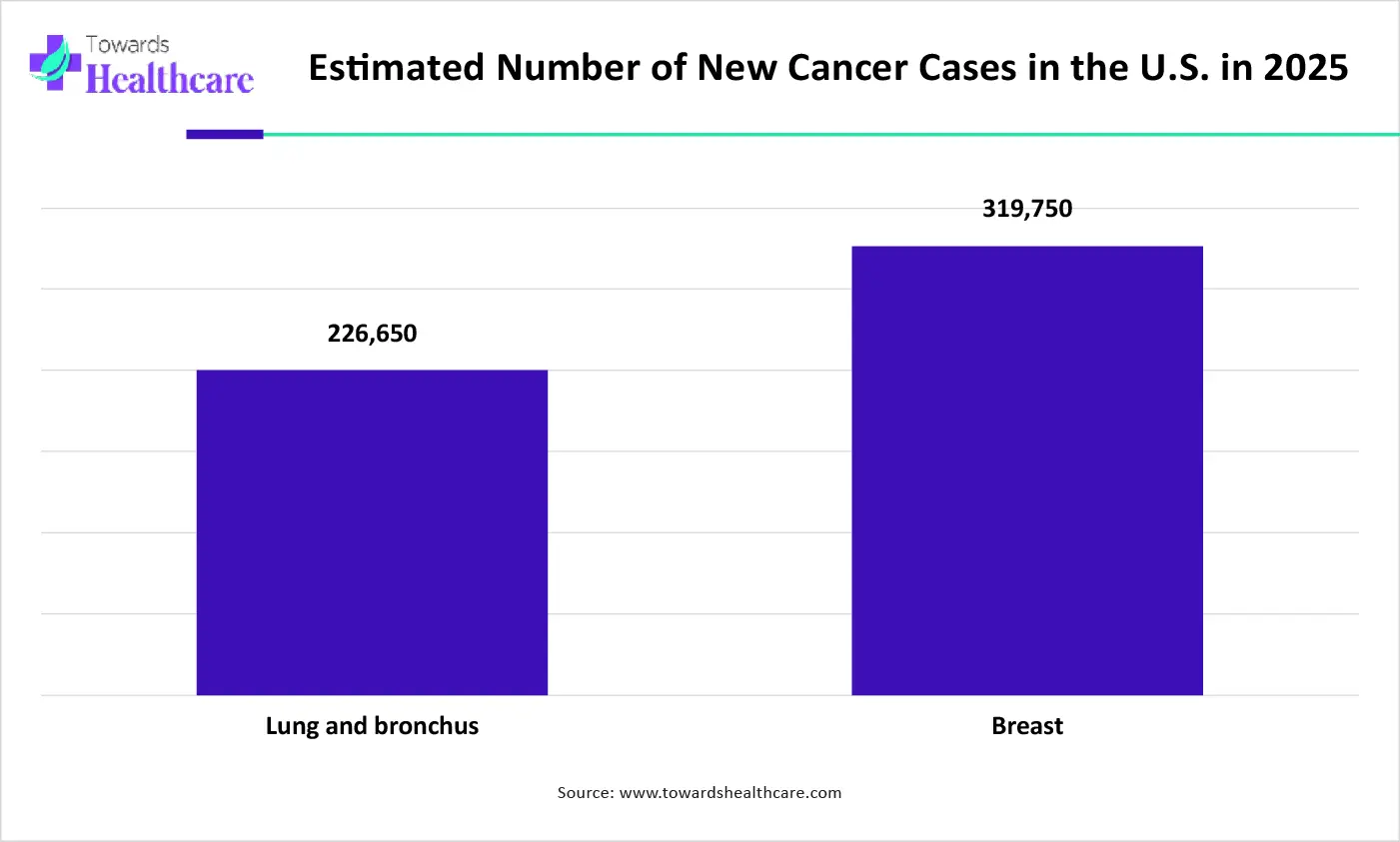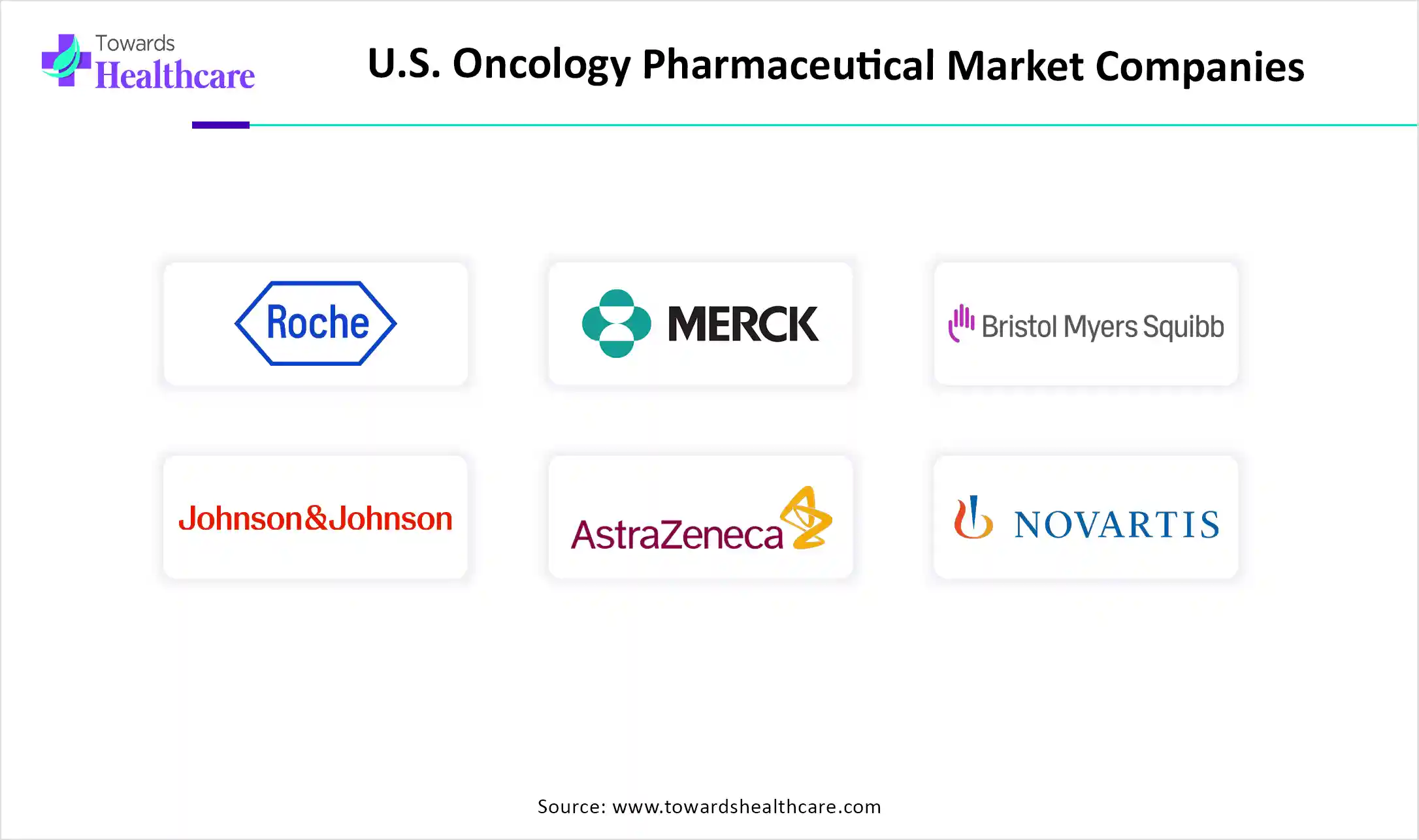December 2025

The U.S. oncology pharmaceuticals market is on an upward trajectory, poised to generate substantial revenue growth, potentially climbing into the hundreds of millions over the forecast years from 2025 to 2034. This surge is attributed to evolving consumer preferences and technological advancements reshaping the industry.
The U.S. oncology pharmaceuticals are experiencing a rise in their use. The increasing research and development are increasing their development. The increasing number of investments is facilitating their development, and new facilities are also being established specifically for oncology. Moreover, new collaborations, as well as launches, are also increasing. The use of AI is also growing for accelerating drug development and optimization. Furthermore, there is a rise in the demand for precision medicines and personalized therapies. Thus, all these advancements are promoting the market growth.
The U.S. oncology pharmaceutical market refers to the market for cancer-related pharmaceutical products, such as cancer drugs and therapies. The drugs developed include cytotoxic drugs, targeted drugs, and hormonal drugs. The different types of therapies, such as chemotherapy, targeted therapy, immunotherapy, and hormonal therapy, are also being developed. These oncology pharmaceutical products can be used for the treatment of various cancer indications. Thus, the market is driven by growing cancer incidences, such as lung cancer, breast cancer, prostate cancer, etc., and increasing distribution through various distribution channels.
Increasing investments: To deal with the increasing cancer cases, various oncology pharmaceutical products are being developed. Thus, to support these developments, the healthcare sector is providing various investments. These investments are also being used for expanding the industries, their capabilities, as well as for launching these products. Moreover, these investments are attracting various companies, leading to new collaborations.
For instance,
The growing applications of AI are increasing its use in the U.S. oncology pharmaceutical development. AI helps in the development of oncology treatments, as it can analyse a vast amount of chemical and biological databases, as well as non-imaging and imaging data. Thus, it can identify tumors or abnormalities from medical images with enhanced accuracy, which helps in the early detection of cancer. It facilitates the identification of biomarkers and selection of optimal treatments, which accelerates the drug development process. They can also be used to design targeted and efficient clinical trials.
Increasing Demand for Precision Medications
As the cancer cases are increasing, the demand for the use of precision medicines is also increasing. These medications provide target-specific action on the genetic mutation or any other targets. This increases the safety of the treatment and minimizes the side effects. Moreover, targeted therapies are also being developed with the help of genomic testing. At the same time, they are being used in combinations that, in turn, enhance their action. Thus, all these developments are driving the U.S. oncology pharmaceutical market growth.
High Cost
The prices associated with oncology treatment in the U.S. are high. This limits access to the treatment approaches for the patients. Additionally, the delay in the reimbursements also decreases the reliance on the therapies. Thus, the high prices of the treatment options minimize their use and adoption by the patients and hospitals, respectively.
Advancing Cancer Drug Development
Due to limited curative and effective cancer treatments, the need for new cancer drugs is increasing. This is promoting the development of new cancer drugs for different types of cancer, along with difficult-to-treat cancer types. Moreover, personalized and targeted treatment options are being developed with the use of molecular biology or genomics, or gene-editing platforms. At the same time, the companies are also developing next-generation therapies for targeting multiple cancers, as well as focusing on the development of new antibody-drug conjugates. Thus, all these advancements are promoting the U.S. oncology pharmaceutical market growth.
For instance,
By drug class type, the targeted drugs segment led the market in 2024 and is expected to sustain its position during the predicted time. They showed high efficacy and minimized the side effects. Hence, they were mostly used for personalized treatments. Thus, this contributed to the market growth.
By therapy type, the targeted therapy segment held the dominating share of the market in 2024. They showed high specificity, which increases patient outcomes. This, in turn, increased their use in different types of cancers. Thus, these advantages, along with reduced side effects, increased their acceptance rates.
By therapy type, the immunotherapy segment is expected to show the fastest growth rate during the upcoming years. The use of immunotherapy is increasing due to its enhanced duration of action. They are being used in various cancer types. Moreover, they are also being used in combination with other therapeutic options.
By indication type, the breast cancer segment led the market in 2024. There was a growth in the incidence of breast cancer in the U.S. Moreover, due to screening programs, awareness also increased. Hence, this increased the use of oncology pharmaceutical products. Thus, this enhanced the market growth.
By indication type, the lung cancer segment is expected to show the highest growth during the predicted time. The increasing occurrences of lung cancer are increasing the demand for oncology pharmaceutical products. Hence, the use of various therapies is increasing. Moreover, there is a rise in the development of new treatment approaches.

The graph represents the estimated number of new lung and breast cancer cases in the U.S. in year of 2025. It indicates that there will be a rise in breast and lung cancer cases in the U.S. Hence, it increases the demand for new oncology pharmaceutical products for their effective treatment and management. Thus, this in turn will ultimately promote the market growth.
By dosage form type, the injectables segment held the largest share of the market in 2024 and is expected to sustain its position during the forthcoming years. The enhanced bioavailability, as well as the rapid onset of action, was observed with the injectables. Thus, complex therapies were administered through this route. Furthermore, they were preferred as an alternative to oral dosage forms.
By distribution channel type, the hospital pharmacies segment held the largest share of the market in 2024. Due to a large patient volume, different types of oncology pharmaceutical products were provided by them. Moreover, the complex therapies and injectables were handled efficiently. Thus, this promoted the market growth.
By distribution channel type, the online pharmacies segment is expected to show the highest growth during the upcoming years. The use of online pharmacies is increasing due to the growing telemedicine. Moreover, their home deliveries are increasing patient convenience. Additionally, due to their enhanced accessibility, they are also being used in remote areas.
The U.S. oncology pharmaceutical market is expected to grow significantly during the forecast period. There is a rise in research and development in the industries, as well as in institutes in the U.S., focusing on different types of cancers. This, in turn, is leading to the development of advanced therapies and innovative technologies. This is also increasing the advancements in antibody-drug conjugates, CAR T therapies, etc. Moreover, new models are also being developed with the use of advanced technologies. Additionally, the presence of the advanced healthcare sector is growing its adoption, encouraging its use. Furthermore, these developments are supported by government investment and are provided with faster approval by regulatory bodies. Thus, this is promoting the market growth.

In May 2025, the CEO of Predictive Oncology, Raymond Vennare, stated that a major milestone was achieved in AI-enabled cancer drug discovery by the company. For 21 previously untested molecules, they have successfully developed predictive tumor response models at the University of Michigan by using Natural Products Discovery Core compounds. The common types of cancer, such as breast, ovarian, and colon cancers, are the targets of these models.
By Drug Class
By Therapy Type
By Indication
By Dosage Form
By Distribution Channel
December 2025
December 2025
December 2025
December 2025